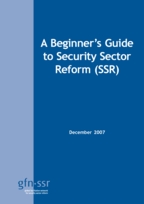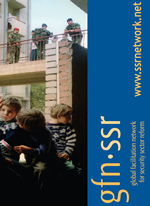Violent conflict is the subject of this topic guide. The guide provides an overview of key topics ranging from the causes, dynamics and impacts of conflict to options for interventions to prevent, manage and respond to conflict. It is divided into five main parts:
- Chapter 1: Understanding violent conflict
- Chapter 2: Living in conflict affected areas: focus on women, children and youth
- Chapter 3: Preventing and managing violent conflict
- Chapter 4: Recovering from violent conflict
- Chapter 5: Intervening in conflict-affected areas
Conflict is inherent in all societies and arises when two or more groups believe their interests are incompatible. ‘Conflict’ is not, however, interchangeable with ‘violence’. Non-violent resolution is possible when individuals and groups have trust in their governing structures, society and institutions to manage incompatible interests. Conflict becomes a problem when this trust and respective conflict management capacities are absent and conflicting parties choose instead to resort to the use of force to secure their goals.
The guide highlights key issues and debates for each topic covered and identifies relevant references. Clicking on the link in a document title will take the reader to a more extensive summary in the GSDRC document library, which includes a direct link to the original document. This guide will be updated on a quarterly basis with new publications and emerging issues.
To view the guide in full, please visit the GSDRC Conflict Guide webpage.
This topic guide was written by Huma Haider (GSDRC). The GSDRC appreciates the contributions of Thania Paffenholz (Graduate Institute of International Relations and Development); Wafula Okumu (Institute for Security Studies); Lyndsay McLean Hilker (Social Development Direct); Marcus Lenzen (DFID) and Juliet Wattebot O’Brien (DFID). Comments, questions or documents can be sent to enquires@gsdrc.org.









